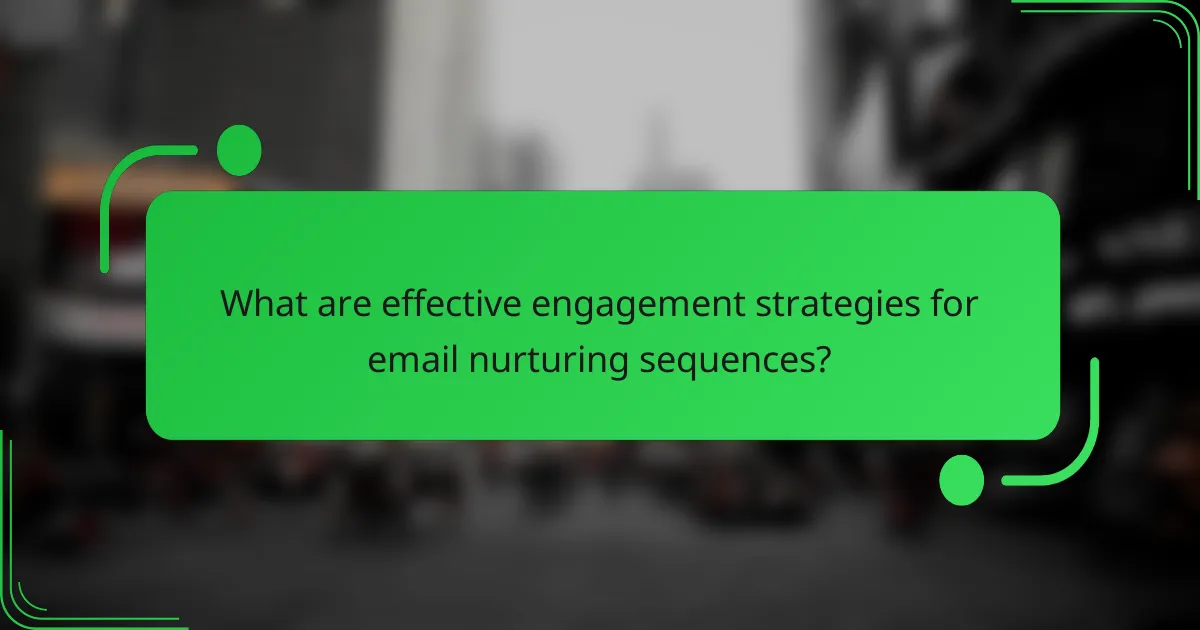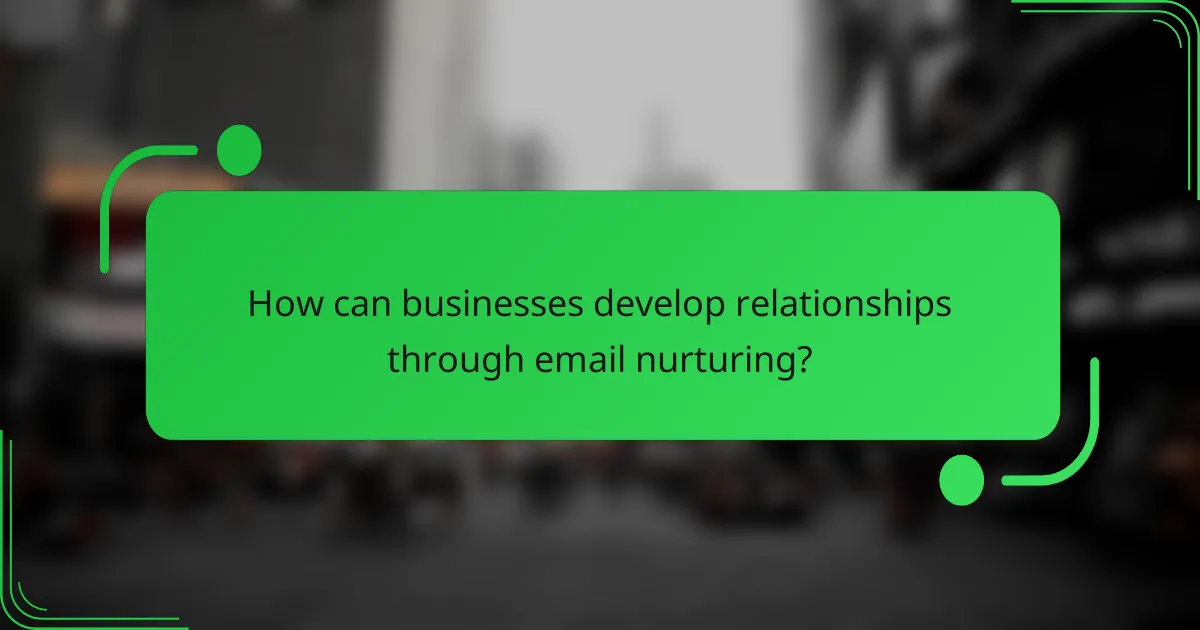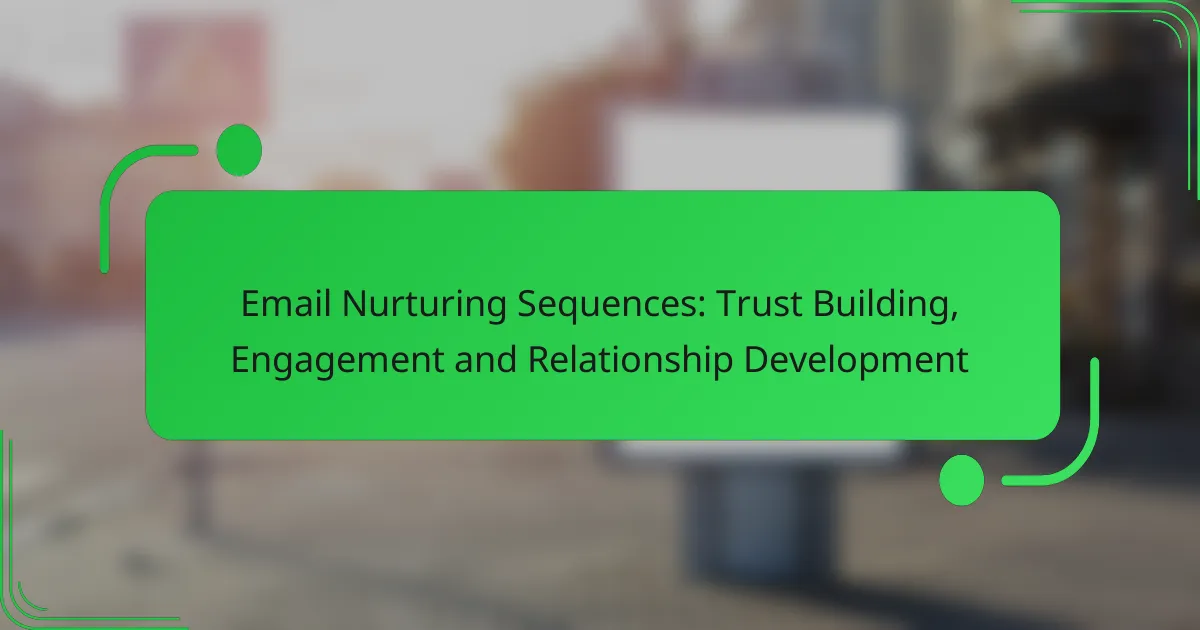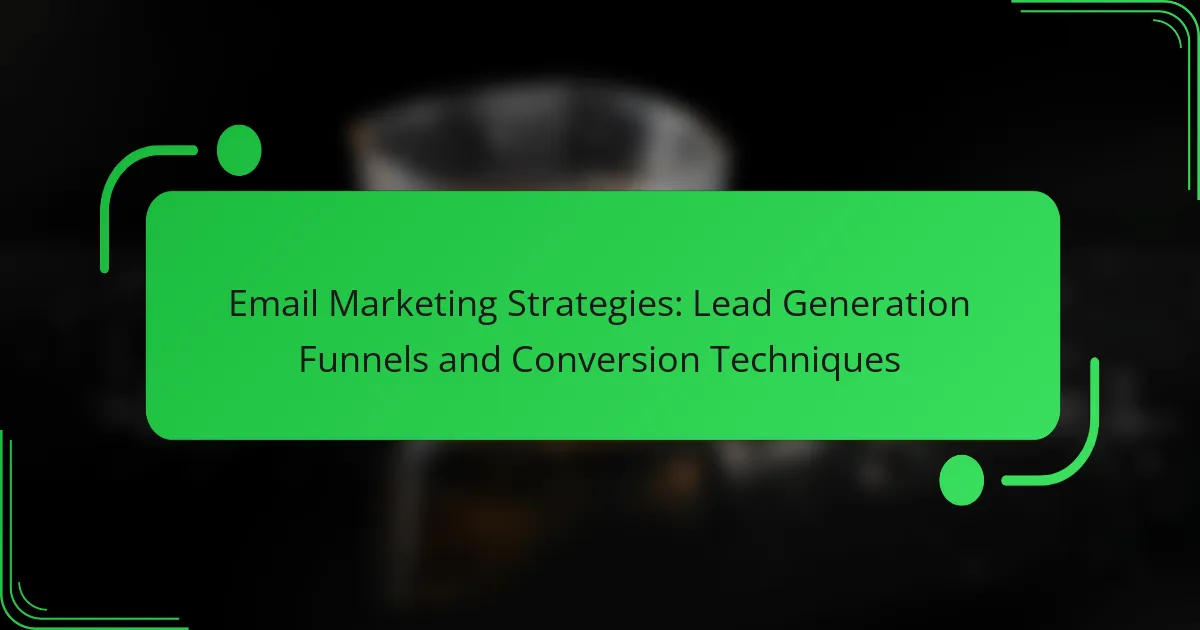Email nurturing sequences are essential for building trust and fostering relationships with recipients through consistent and personalized communication. By engaging audiences over time with targeted content, businesses can enhance interaction and loyalty, demonstrating reliability and value. This strategic approach not only nurtures leads but also cultivates lasting connections with customers.

How do email nurturing sequences build trust in the United States?
Email nurturing sequences build trust in the United States by establishing a consistent and personalized communication strategy that engages recipients over time. These sequences help brands demonstrate reliability and value, fostering a stronger relationship with their audience.
Personalized content delivery
Personalized content delivery is crucial for building trust through email nurturing sequences. By tailoring messages to individual preferences and behaviors, brands can create a more relevant experience for recipients. This might include using the recipient’s name, recommending products based on past purchases, or segmenting audiences to send targeted content.
For effective personalization, consider using data analytics tools to track user interactions and preferences. Aim to personalize at least 50% of your email content to significantly enhance engagement rates.
Consistent communication
Consistent communication is essential in nurturing sequences to keep your audience engaged and informed. Regularly scheduled emails, whether weekly or bi-weekly, help maintain visibility and reinforce your brand’s presence in the recipient’s mind. This consistency builds familiarity, which is a key component of trust.
To avoid overwhelming your audience, establish a clear schedule and stick to it. Monitor engagement metrics to adjust frequency as needed, aiming for a balance that keeps your audience interested without causing fatigue.
Value-driven messaging
Value-driven messaging focuses on providing useful information and solutions that resonate with your audience’s needs. By sharing educational content, exclusive offers, or helpful tips, you position your brand as a valuable resource. This approach not only enhances trust but also encourages ongoing engagement.
Consider incorporating a mix of content types, such as how-to guides, industry insights, and special promotions. Aim to ensure that at least 70% of your emails deliver value beyond just selling products, which can significantly improve recipient trust and loyalty.

What are effective engagement strategies for email nurturing sequences?
Effective engagement strategies for email nurturing sequences focus on building trust and fostering relationships with recipients. By implementing targeted approaches, businesses can enhance interaction and improve customer loyalty over time.
Segmentation of email lists
Segmentation involves dividing your email list into smaller groups based on specific criteria such as demographics, behavior, or purchase history. This allows for tailored messaging that resonates with each segment, increasing the likelihood of engagement.
For example, a clothing retailer might segment their list by gender or past purchase categories, sending targeted promotions that appeal directly to each group. This personalized approach can lead to higher open and click-through rates.
Interactive content inclusion
Incorporating interactive content, such as polls, quizzes, or surveys, can significantly enhance engagement in email nurturing sequences. This type of content encourages recipients to participate actively, making the experience more enjoyable and memorable.
For instance, a travel agency might include a quiz about dream vacation destinations, prompting users to engage while also gathering valuable insights about their preferences. This not only boosts interaction but also helps tailor future communications.
Timely follow-ups
Timely follow-ups are crucial in maintaining engagement and nurturing relationships. Sending follow-up emails shortly after a recipient interacts with your content or makes a purchase can reinforce their interest and encourage further action.
Consider setting up automated follow-up sequences that trigger based on specific actions, such as a thank-you email after a purchase or a reminder for an abandoned cart. This strategy keeps your brand top-of-mind and can lead to increased conversions.

How can businesses develop relationships through email nurturing?
Businesses can develop relationships through email nurturing by creating personalized, engaging content that resonates with their audience. This approach fosters trust and encourages ongoing interaction, ultimately leading to stronger customer loyalty.
Storytelling techniques
Utilizing storytelling techniques in email nurturing can captivate your audience and make your messages more relatable. Share customer success stories or behind-the-scenes insights that highlight your brand’s values and mission.
Consider structuring your emails with a clear narrative arc: introduce a challenge, present a solution, and conclude with a call to action. This format not only engages readers but also encourages them to envision themselves as part of your brand’s journey.
Customer feedback integration
Integrating customer feedback into your email nurturing sequences demonstrates that you value your audience’s opinions. Regularly solicit feedback through surveys or direct questions, and use this information to tailor your content and offerings.
For instance, if customers express interest in specific topics, create targeted email campaigns addressing those areas. This responsiveness can significantly enhance engagement and strengthen relationships.
Exclusive offers and incentives
Offering exclusive deals and incentives through email nurturing can motivate customers to engage more deeply with your brand. Consider providing special discounts, early access to new products, or loyalty rewards to your email subscribers.
Make these offers time-sensitive to create urgency, and clearly communicate the value they provide. This strategy not only encourages immediate action but also reinforces the idea that your subscribers are part of an exclusive community.

What metrics should be tracked for email nurturing effectiveness?
To assess the effectiveness of email nurturing, focus on three key metrics: open rates, click-through rates, and conversion rates. These metrics provide insights into how well your emails engage recipients and drive desired actions.
Open rates
Open rates measure the percentage of recipients who open your email compared to the total number of emails delivered. A good open rate typically ranges from 15% to 25%, depending on your industry and audience. To improve open rates, consider optimizing subject lines and sending times.
Tracking open rates helps you understand the effectiveness of your subject lines and overall email strategy. If you notice low open rates, it may indicate that your audience is not finding your emails relevant or engaging.
Click-through rates
Click-through rates (CTR) indicate the percentage of recipients who clicked on one or more links within your email. A healthy CTR usually falls between 2% and 5%, but this can vary widely based on the content and audience. To enhance CTR, ensure your emails contain clear calls to action and valuable content.
Monitoring CTR allows you to gauge how compelling your email content is. If your CTR is low, consider A/B testing different content formats or link placements to see what resonates best with your audience.
Conversion rates
Conversion rates reflect the percentage of email recipients who complete a desired action, such as making a purchase or signing up for a webinar. A typical conversion rate for email campaigns ranges from 1% to 5%. To boost conversion rates, align your email content with the specific goals of your campaign.
Tracking conversion rates is crucial for understanding the overall effectiveness of your email nurturing strategy. If conversions are low, analyze the user journey and ensure that the landing pages are optimized for the actions you want recipients to take.

What tools can enhance email nurturing sequences?
Several tools can significantly improve email nurturing sequences by automating processes, providing analytics, and enabling effective segmentation. Utilizing these tools helps build trust, engage recipients, and develop lasting relationships.
HubSpot for automation
HubSpot offers robust automation features that streamline email nurturing sequences. Users can set up workflows that trigger emails based on user behavior, such as website visits or form submissions, ensuring timely and relevant communication.
To maximize HubSpot’s capabilities, consider creating personalized email paths for different user segments. This approach increases engagement rates and fosters a deeper connection with your audience.
Mailchimp for analytics
Mailchimp provides comprehensive analytics tools that help track the performance of email campaigns. Users can analyze open rates, click-through rates, and conversion metrics to gauge the effectiveness of their nurturing sequences.
Utilizing Mailchimp’s reporting features allows for data-driven adjustments to your strategy. Regularly review these metrics to identify trends and optimize your content for better engagement.
ActiveCampaign for segmentation
ActiveCampaign excels in segmentation, allowing users to categorize their email lists based on various criteria such as demographics, behavior, or engagement levels. This targeted approach ensures that recipients receive content tailored to their specific interests.
To effectively use segmentation, regularly update your lists and refine your criteria based on user interactions. This practice helps maintain relevance and improves overall email performance, leading to stronger relationships with your audience.

What are the prerequisites for implementing email nurturing?
To effectively implement email nurturing, you need a clear understanding of your target audience, a well-defined strategy, and the right tools for automation and tracking. These prerequisites ensure that your emails resonate with recipients and foster trust and engagement.
Defined target audience
Identifying your defined target audience is crucial for successful email nurturing. This involves segmenting your audience based on demographics, interests, and behaviors to tailor your messages effectively. Knowing who you are communicating with allows you to create content that meets their specific needs and preferences.
Consider using buyer personas to represent different segments of your audience. For example, if you are targeting small business owners, your emails might focus on solutions that save time and reduce costs. This focused approach enhances engagement and increases the likelihood of building a lasting relationship.
Regularly review and update your audience segments based on feedback and engagement metrics. This ensures that your email nurturing remains relevant and effective, adapting to changes in customer preferences and market trends.


